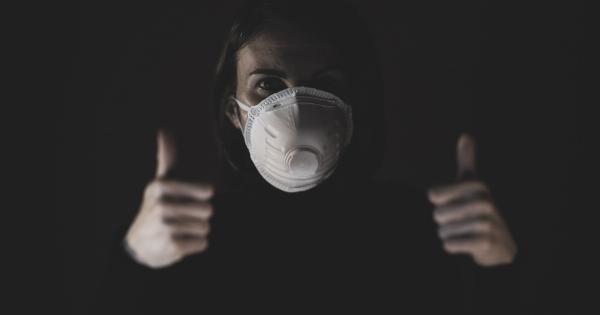Mononucleosis, commonly known as mono or the ‘kissing disease,’ is a viral infection that primarily affects young adults and teenagers. It is caused by the Epstein-Barr virus (EBV), a member of the herpesvirus family.
Although mono is usually not life-threatening, it can lead to severe complications if not properly managed. In this article, we will delve into the various aspects of mononucleosis, including its causes, symptoms, complications, and treatment options.
Causes of Mononucleosis
Mononucleosis is primarily caused by the Epstein-Barr virus, which is highly contagious and spreads through saliva. It can be transmitted through activities such as kissing, sharing food utensils, or even airborne droplets from coughs and sneezes.
The virus can also be present in the blood and other bodily fluids, making it easy for the infection to spread.
Additionally, mononucleosis can be contracted through contact with infected objects, such as toothbrushes or drinking glasses. People with weakened immune systems are particularly vulnerable to the virus.
Symptoms of Mononucleosis
The symptoms of mononucleosis may vary from person to person. Some individuals may experience mild symptoms, while others may suffer from severe manifestations. Common symptoms include:.
1. Extreme Fatigue
One of the hallmark symptoms of mononucleosis is severe fatigue that can last for weeks or even months. This exhaustion is often unrelieved by rest or sleep.
2. Sore Throat and Swollen Tonsils
Another common symptom is a sore throat accompanied by swollen tonsils. The throat may appear red and inflamed, making swallowing painful.
3. Fever and Chills
A high-grade fever, often accompanied by chills, is a typical sign of mononucleosis. The body’s immune response to the viral infection can lead to an elevated body temperature.
4. Enlarged Lymph Nodes
The lymph nodes, particularly those in the neck, groin, and armpits, may become swollen and tender due to the immune system’s response to the infection.
5. Headache and Body Aches
Headaches and body aches are common symptoms of mononucleosis. These may be similar to flu-like symptoms, causing discomfort and discomfort.
6. Skin Rash
In some cases, individuals with mono may develop a characteristic skin rash. This rash usually consists of small, red bumps and is not usually itchy.
Complications of Mononucleosis
While mononucleosis is usually a self-limiting illness, it can lead to serious complications in some cases. These complications include:.
1. Splenic Rupture
The spleen, which helps filter the blood and fight infections, can become enlarged as a result of mononucleosis. In rare cases, the spleen can rupture, leading to severe internal bleeding and requiring emergency medical attention.
2. Hepatitis
Inflammation of the liver, known as hepatitis, can occur as a result of the Epstein-Barr virus infection. This can cause symptoms such as jaundice, abdominal pain, and elevated liver enzymes in blood tests.
3. Neurological Complications
Although rare, mononucleosis can lead to neurological complications such as meningitis or encephalitis. These conditions can cause severe headaches, confusion, seizures, and other neurological deficits.
4. Secondary Infections
As mononucleosis weakens the immune system, individuals may be more susceptible to secondary infections, such as bacterial tonsillitis or pneumonia.
Treatment Options for Mononucleosis
As mononucleosis is a viral infection, antibiotics are not effective in treating the underlying cause. Therefore, treatment primarily focuses on managing the symptoms and supporting the immune system’s recovery.
Some common treatment options include:.
1. Rest and Fluids
Bed rest and increased fluid intake are crucial for recovery. Resting allows the body to conserve energy and redirect resources towards fighting the virus, while fluids help prevent dehydration.
2. Pain Relievers
Over-the-counter pain relievers, such as acetaminophen or ibuprofen, may be recommended to relieve fever, sore throat, and body aches. However, it is important to follow the recommended dosages and consult a healthcare professional if symptoms worsen.
3. Corticosteroids
In severe cases of mono with significant swelling and inflammation, corticosteroids may be prescribed to lessen the immune response and alleviate symptoms.
4. Avoiding Contact Sports
To prevent the risk of splenic rupture, individuals with mono should avoid contact sports or any activity that may put them at risk of abdominal trauma.
5. Monitoring for Complications
Regular check-ups and monitoring are essential to detect any potential complications early on. This allows for prompt intervention and appropriate management.
Conclusion
Mononucleosis, often referred to as the ‘silent killer,’ is a viral infection caused by the Epstein-Barr virus. While it may initially present as a seemingly harmless illness, mononucleosis can lead to severe complications if left untreated.
The symptoms can be debilitating, with extreme fatigue and sore throat being characteristic signs. It is crucial to seek medical attention and proper management to prevent complications and facilitate a faster recovery.
By understanding the causes, symptoms, complications, and treatment options of mononucleosis, individuals can protect themselves and those around them from this silent but potentially dangerous infection.




























